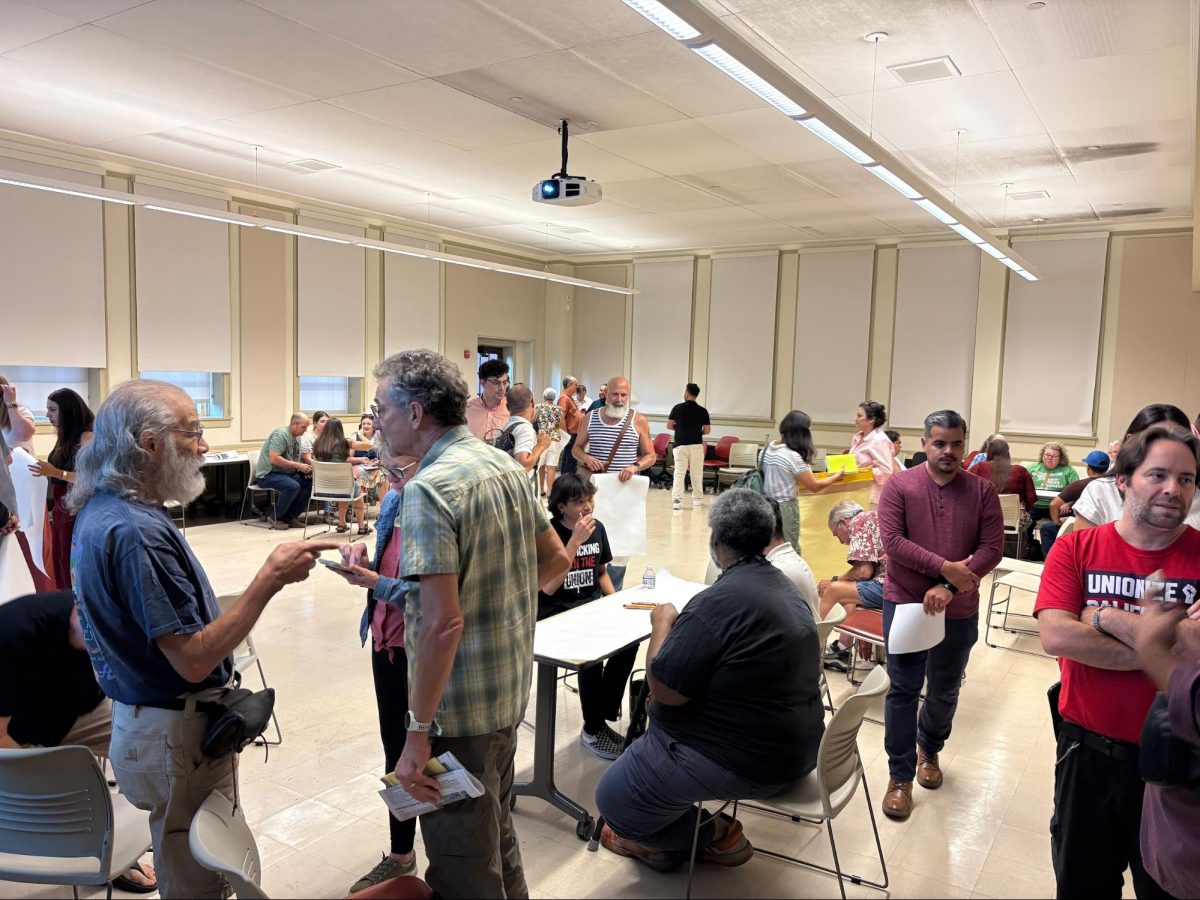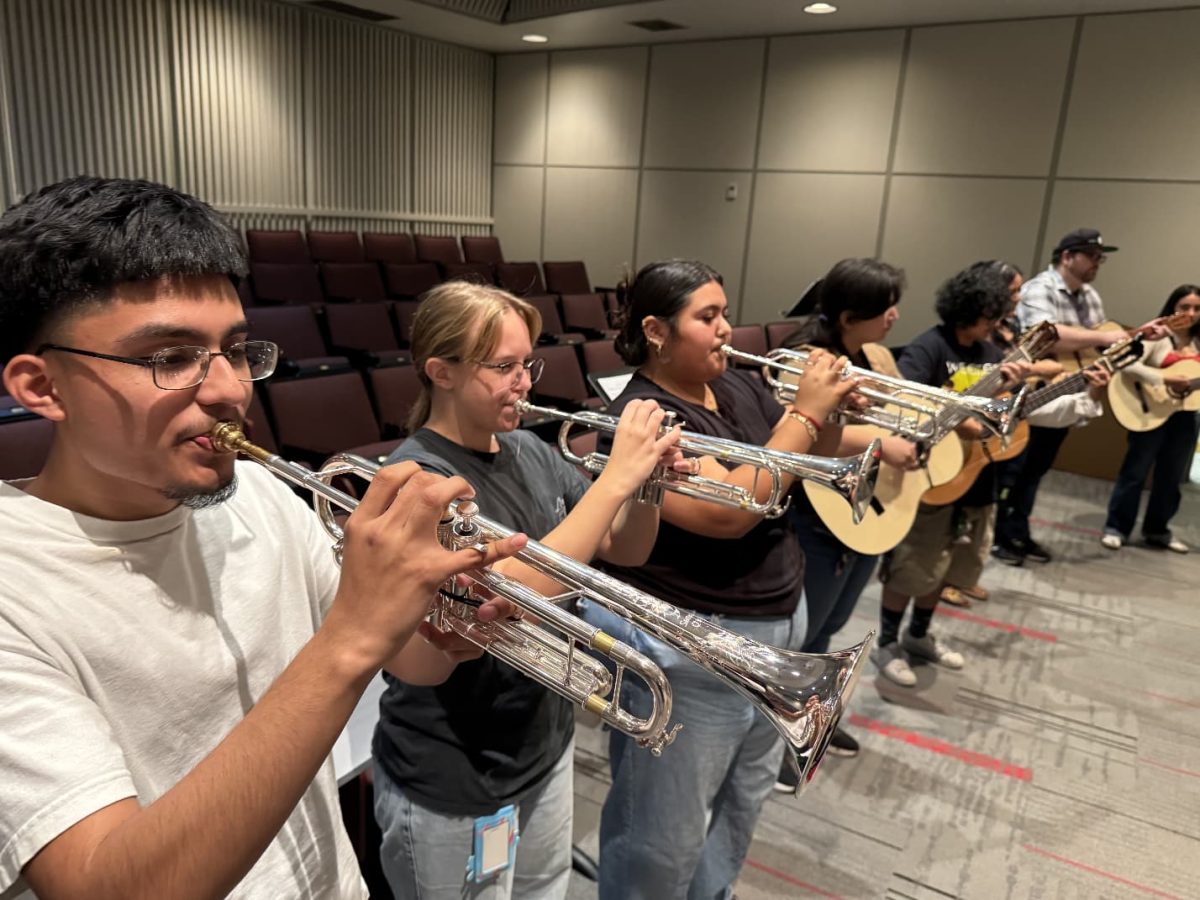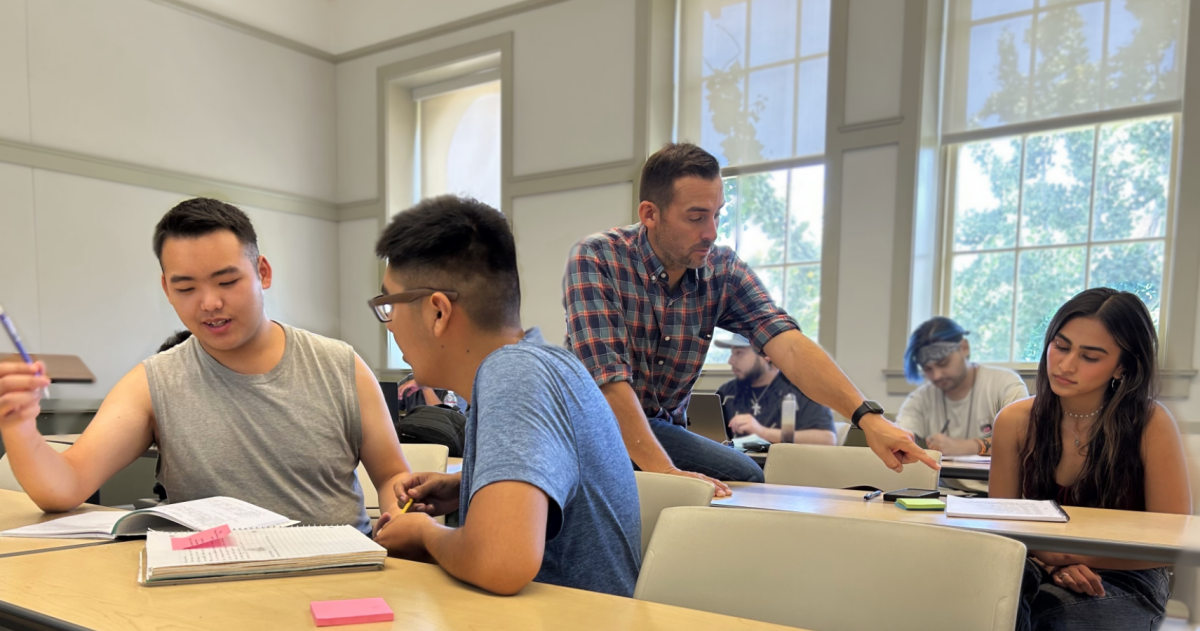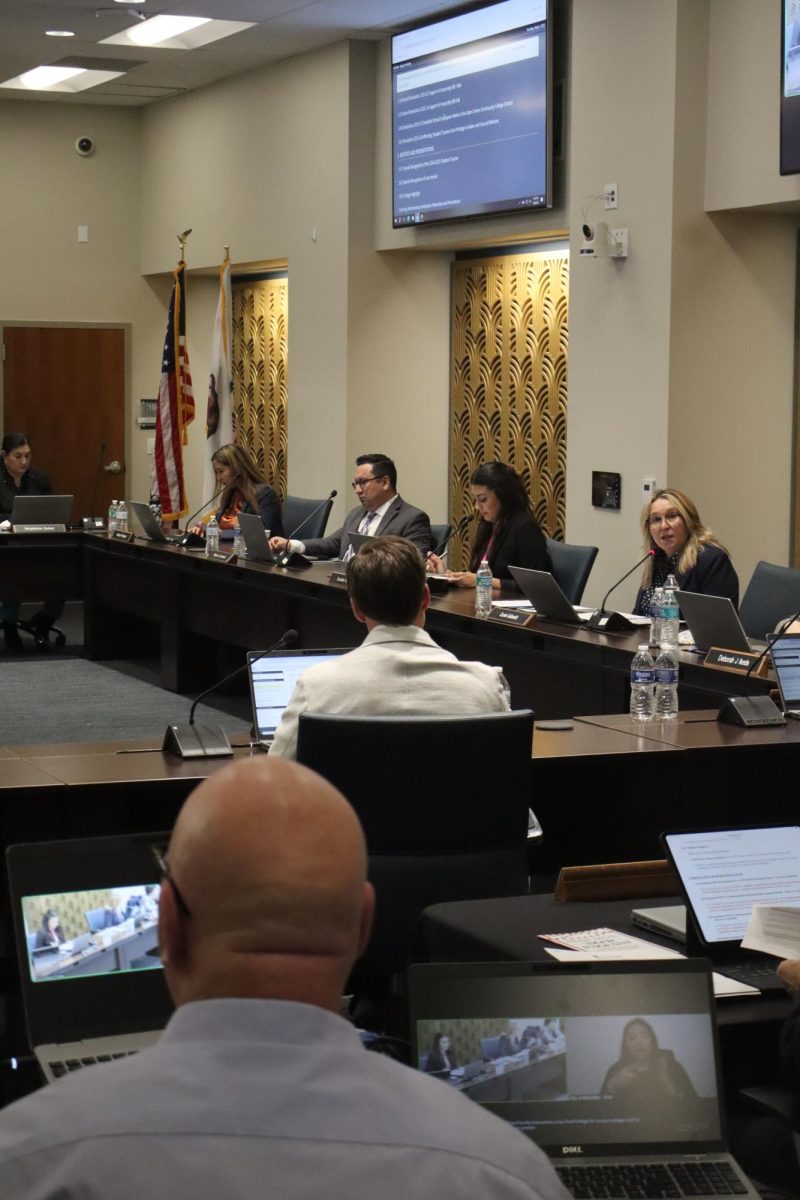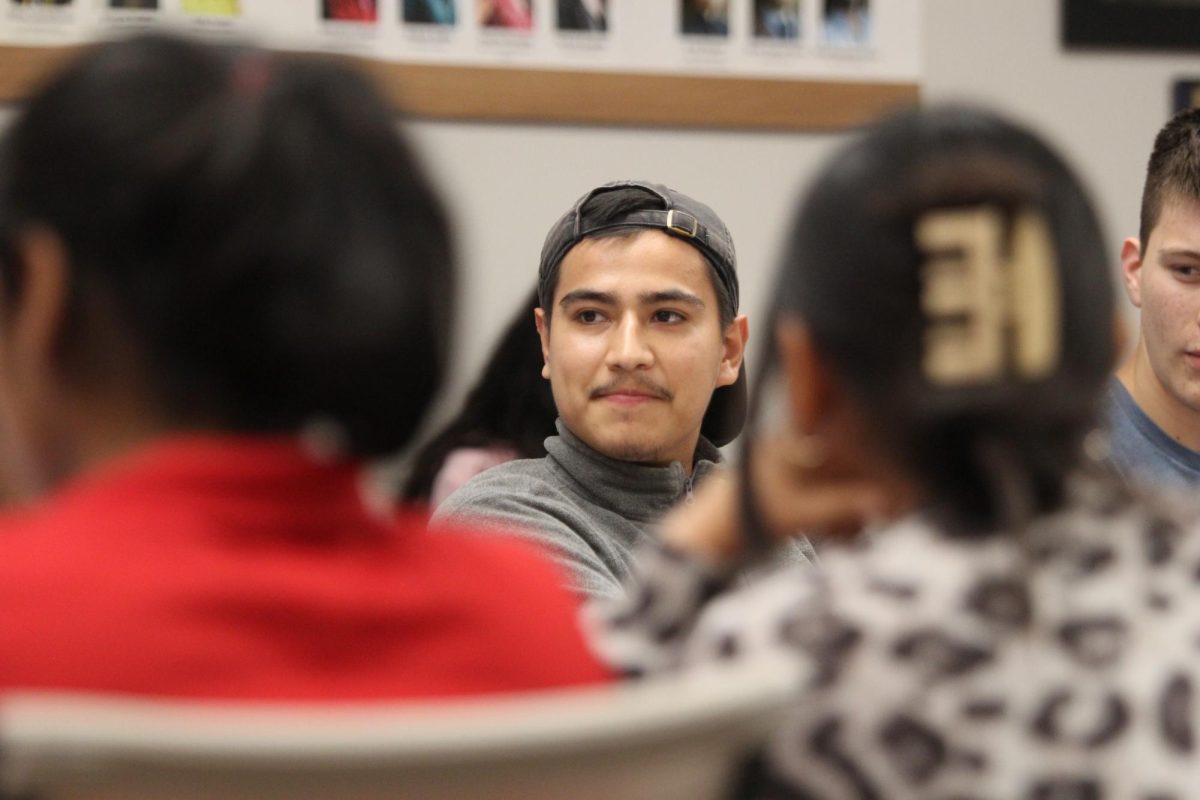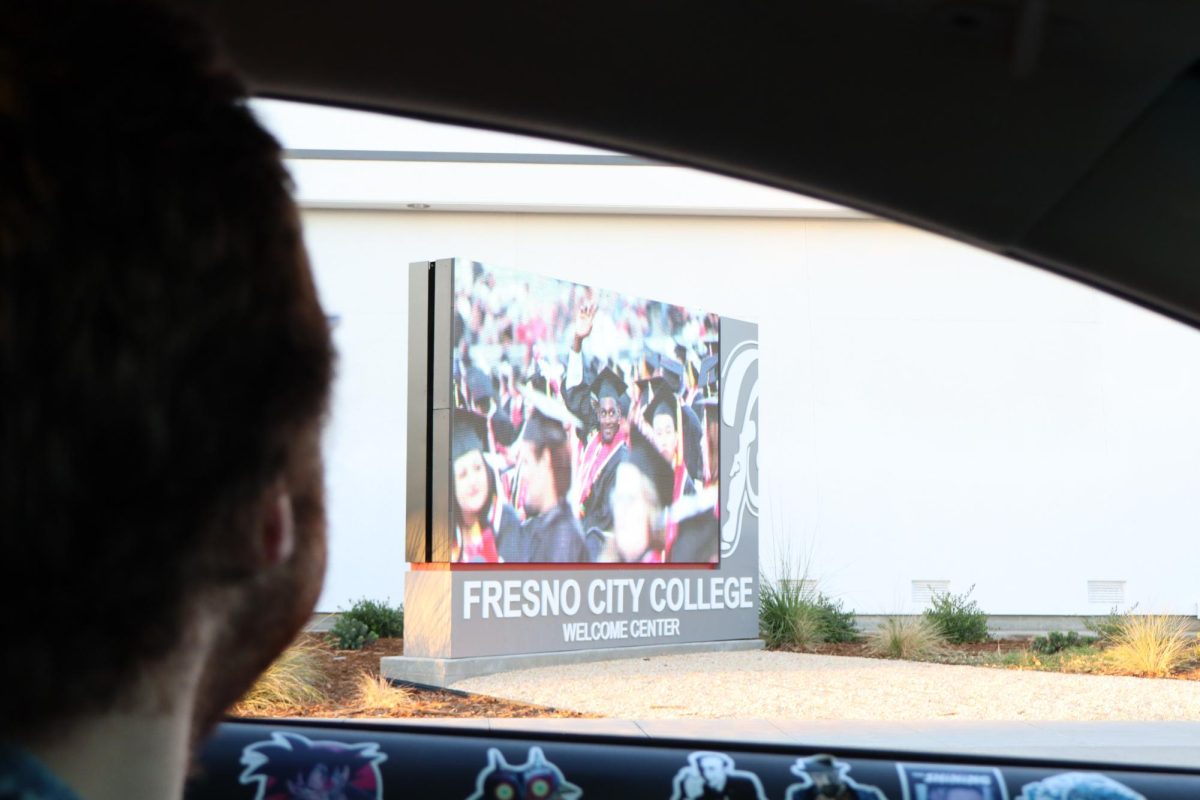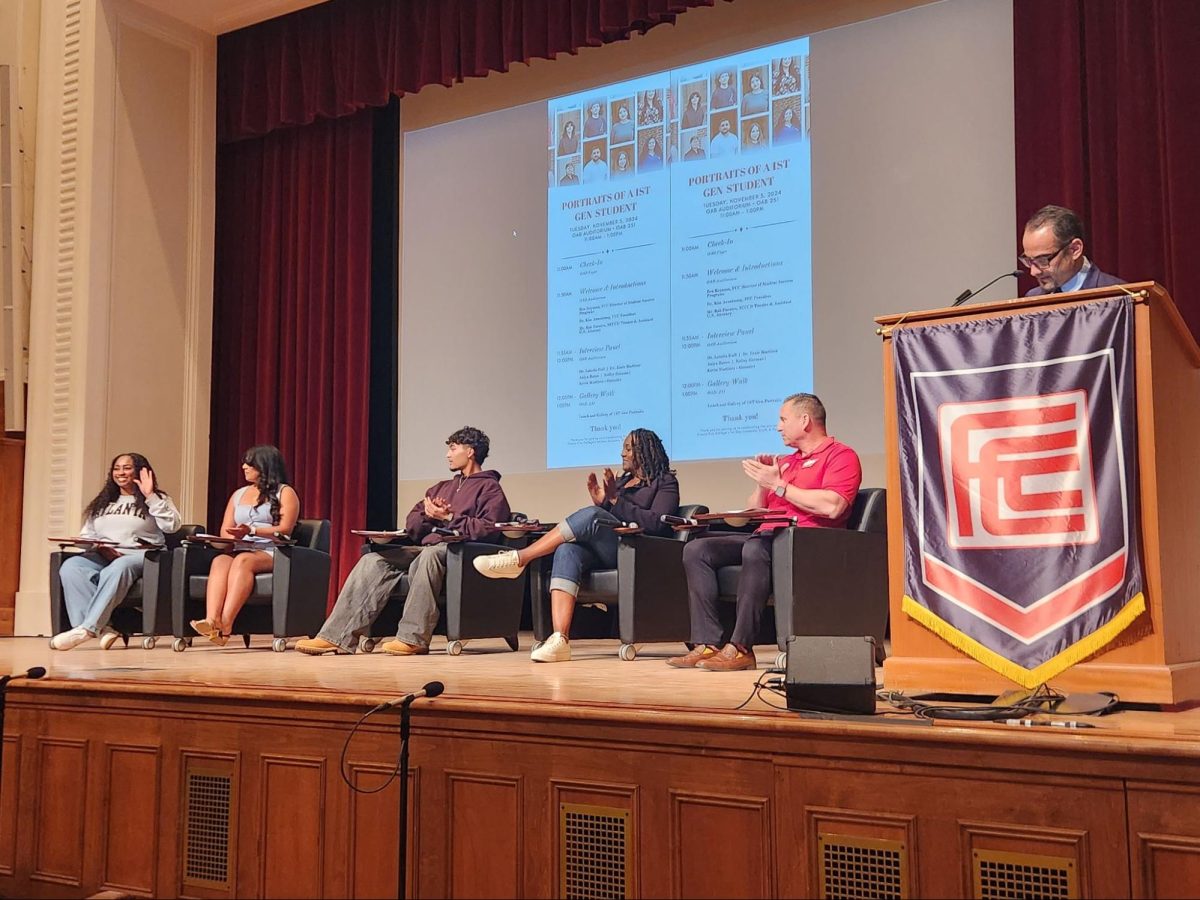Continuing renovations of the Math and Science Building classrooms damaged by flooding should be finished in the next few months, according to Darren Cousineau, the Environmental Health and Safety Director for the State Center Community College District.
Water damage from a plumbing leak in Fresno City College’s Math and Science Building originated on the top floor and caused damage to all other floors. The leak was found Aug. 11, the weekend before the fall semester started, and caused flooding of the bottom floor. The leak has since been fixed.
Three months later, the courtyard floor remains the only level still in need of significant renovations, with around four or five rooms under renovation.
Bare concrete flooring, stripped of linoleum that was ruined by water moisture, still needs to be stained and sealed with paint. The original material used, vinyl composite tile or VCT, was removed and will not be replaced due to its vulnerability to weaken when exposed to moisture.
Classroom walls with sheetrock originally exposed by water damage need new coats of paint and new furniture ordered for the computer lab needs to be delivered. Brian Speece, Associate Vice Chancellor for Business and Operations of SCCCD, said that he plans to order the furniture on Nov. 1.
The new furniture will be more modern and ergonomic, he said.
Classrooms on the upper floors needed little work aside from a few floorboards needing replacement and walls that needed to be painted in certain classrooms.
Yet Cousineau states that all is going well. The renovation, provided by American Technologies, Inc., an emergency environmental reconstruction service, is on track to finish over winter break and reopen for the spring 2014 semester.
“There’s no reason in my mind why it wouldn’t [reopen],” Cousineau stated. He added that some issues could be fixed in “one month or so.”
In the meantime, however, such progress has created additional problems students must deal with. Molly Her, an FCC student who attends a math class on the courtyard floor, stated that the noise from the renovation is a challenge in the echo-filled floor of classrooms.
“It’s really loud when we’re in class. It’s a lot of pounding and sometimes they get on the roof and [there’s] more pounding,” Her said.
Her claimed that at one point during a math exam, the construction noise lasted around ten minutes.
“If they’re using one of those saws and they’re making a lot of noise, or those electrical drills … it gets really frustrating when I’m trying to concentrate,” Her added.
Courses with damages are still being taught mostly in classrooms in the Old Administration Building. More than 80 classes were reassigned to new rooms according to a list emailed to many employees in August before the fall semester started.
The flood was caused by broken pipes on the top floor that carried deionized water that is used solely in science lab class projects. The deionized water is fairly corrosive which caused the plastic pipes to eventually rupture. It is only an issue for the Math and Science Building classrooms, not any other non-lab classrooms on campus that do not use such water in their sinks.
Speece stated that the plastic pipes have since been replaced with an improved, more effective version.
There was also a small leak a few weeks ago on the top floor that was quickly fixed within a day, Speece said. It caused ceiling tiles to need replacement and more water (although less in amount than the first leak) to seep to the courtyard floor.
Although the Math and Science Building class moves will continue for the rest of the semester, the courtyard floor reopening in spring 2014 will give students something new to look forward to.
“I hope it’s fixed for the best,” said Her, “just to better the department.”

